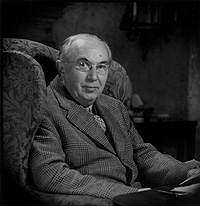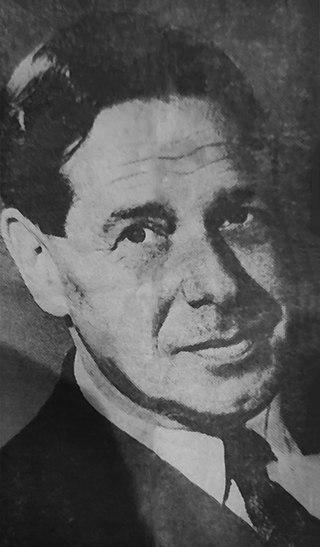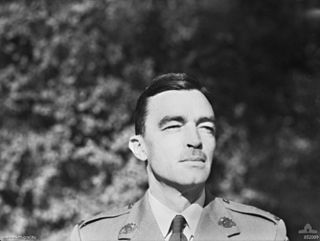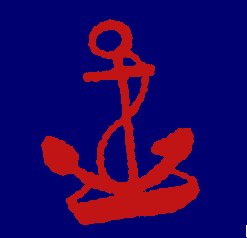Related Research Articles

Charles Edwin Woodrow Bean, usually identified as C. E. W. Bean, was an historian and one of Australia's official war correspondents. According to the Online International Encyclopedia of the First World War, no other Australian has been more influential in shaping the way the First World War is remembered in Australia. He was a primary advocate in establishing the Australian War Memorial (AWM).

Sydney Charles Buxton, 1st Earl Buxton, was a radical British Liberal politician of the late 19th and early 20th centuries. He also served as the second Governor-General of South Africa from 1914 to 1920

HMAS Australia was one of three Indefatigable-class battlecruisers built for the defence of the British Empire. Ordered by the Australian government in 1909, she was launched in 1911, and commissioned as flagship of the fledgling Royal Australian Navy (RAN) in 1913. Australia was the only capital ship ever to serve in the RAN.

Air Marshal Sir Richard Williams,, is widely regarded as the "father" of the Royal Australian Air Force (RAAF). He was the first military pilot trained in Australia, and went on to command Australian and British fighter units in World War I. A proponent for air power independent of other branches of the armed services, Williams played a leading role in the establishment of the RAAF and became its first Chief of the Air Staff (CAS) in 1922. He served as CAS for thirteen years over three terms, longer than any other officer.
The Official History of Australia in the War of 1914–1918 is a 12-volume series covering Australian involvement in the First World War. The series was edited by C.E.W. Bean, who also wrote six of the volumes and was published between 1920 and 1942. The first seven volumes deal with the Australian Imperial Force while other volumes deal with the Australian Naval and Military Expeditionary Force at Rabaul, the Royal Australian Navy, the Australian Flying Corps and the home front; the final volume is a photographic record.

Sir William MacGregor, was a Lieutenant-Governor of British New Guinea, Governor of Lagos Colony, Governor of Newfoundland and Governor of Queensland.


Boris Ord, was a British organist and choirmaster of King's College, Cambridge (1929-1957). During World War II he served in the Royal Air Force. He is best known for his choral setting of Adam lay ybounden, his only published composition.

Sir Henry Somer Gullett KCMG CB was an Australian journalist, military historian and politician. He was a war correspondent during World War I and co-authored the official history of Australia's involvement in the war. He later served in federal parliament from 1925 to 1940 and held senior ministerial office.

Arthur Leslie Benjamin was an Australian composer, pianist, conductor and teacher. He is best known as the composer of Jamaican Rumba (1938) and of the Storm Clouds Cantata, featured in both versions of the Alfred Hitchcock film The Man who Knew Too Much, in 1934 and 1956.
The Australian Encyclopaedia is an encyclopedia focused on Australia. In addition to biographies of notable Australians the coverage includes the geology, flora, fauna as well as the history of the continent. It was first published by Angus and Robertson in two volumes, one each in 1925 and 1926. The most recent edition, the sixth, is of eight volumes published in 1996.

Arthur Wesley Wheen, was an Australian soldier, translator and museum librarian. He is best known for translating the work of Erich Maria Remarque into English, beginning with the classic war novel All Quiet on the Western Front in 1929.

Walter Oswald Watt, was an Australian aviator and businessman. He served as a pilot during World War I with, firstly, the French Foreign Legion and, secondly, the Australian Flying Corps (AFC).

Gavin Merrick Long was an Australian journalist and military historian. He was the general editor of the official history series Australia in the War of 1939–1945 and the author of three of its 22 volumes.

The Royal Australian Naval Bridging Train was a unique unit of the Royal Australian Navy. It was active only during the First World War, where it served in the Gallipoli and the Sinai and Palestine Campaigns. The Train was formed in February 1915 and stood down in May 1917. Throughout its existence, it was composed of Royal Australian Naval Reservists under the command of Lieutenant Commander Leighton Bracegirdle. Normally under the command of the British IX Corps, the Train also supported the I ANZAC Corps and Imperial Camel Corps in the defence of the Suez Canal.
They were the only Australian naval unit serving in a European theatre of war. They were therefore bent on proving, both to the Royal Navy and to the British Army, that they could overcome any difficulties.
George Herbert Jose was a canon of St Peter's Cathedral, Adelaide, Australia, archdeacon of Mount Gambier and Dean of Adelaide.

Frederick Charles Belson was an English international rugby union forward who played club rugby for Clifton and Bath, and county rugby for Somerset. Belson played international rugby for the British Isles on their 1899 tour of Australia.

Eric Harrison was an Australian aviator who made the country's first military flight, and helped lay the foundations of the Royal Australian Air Force (RAAF).
Arthur Trystan Edwards was a Welsh architectural critic, town planner and amateur cartographer. He was a noted critic of the garden city movement.
References
- 1 2 3 4 Lamont, Ross (1983). "Jose, Arthur Wilberforce (1863–1934)". Australian Dictionary of Biography . National Centre of Biography, Australian National University. ISSN 1833-7538 . Retrieved 28 March 2011.
- ↑ Serle, Percival (1949). "Jose, Arthur Wilberforce". Dictionary of Australian Biography . Sydney: Angus & Robertson . Retrieved 27 March 2011.
- ↑ "Clifton College Register" Muirhead, J.A.O. p46: Bristol; J.W Arrowsmith for Old Cliftonian Society; April, 1948
- ↑ Vol IX - The Royal Australian Navy 1914-1918 (9th edition, 1941)
- ↑ Lamont, Ross (1987), Introduction to University of Queensland Press edition of Volume IX – The Royal Australian Navy, 1914–1918, Official History of Australia in the War of 1914-1918 , retrieved 27 March 2011
- ↑ Jose Arthur Wilberforce Archived 5 June 2012 at the Wayback Machine Brisbane City Council Grave Location Search